Nature into Art: Wax Tulip Mania
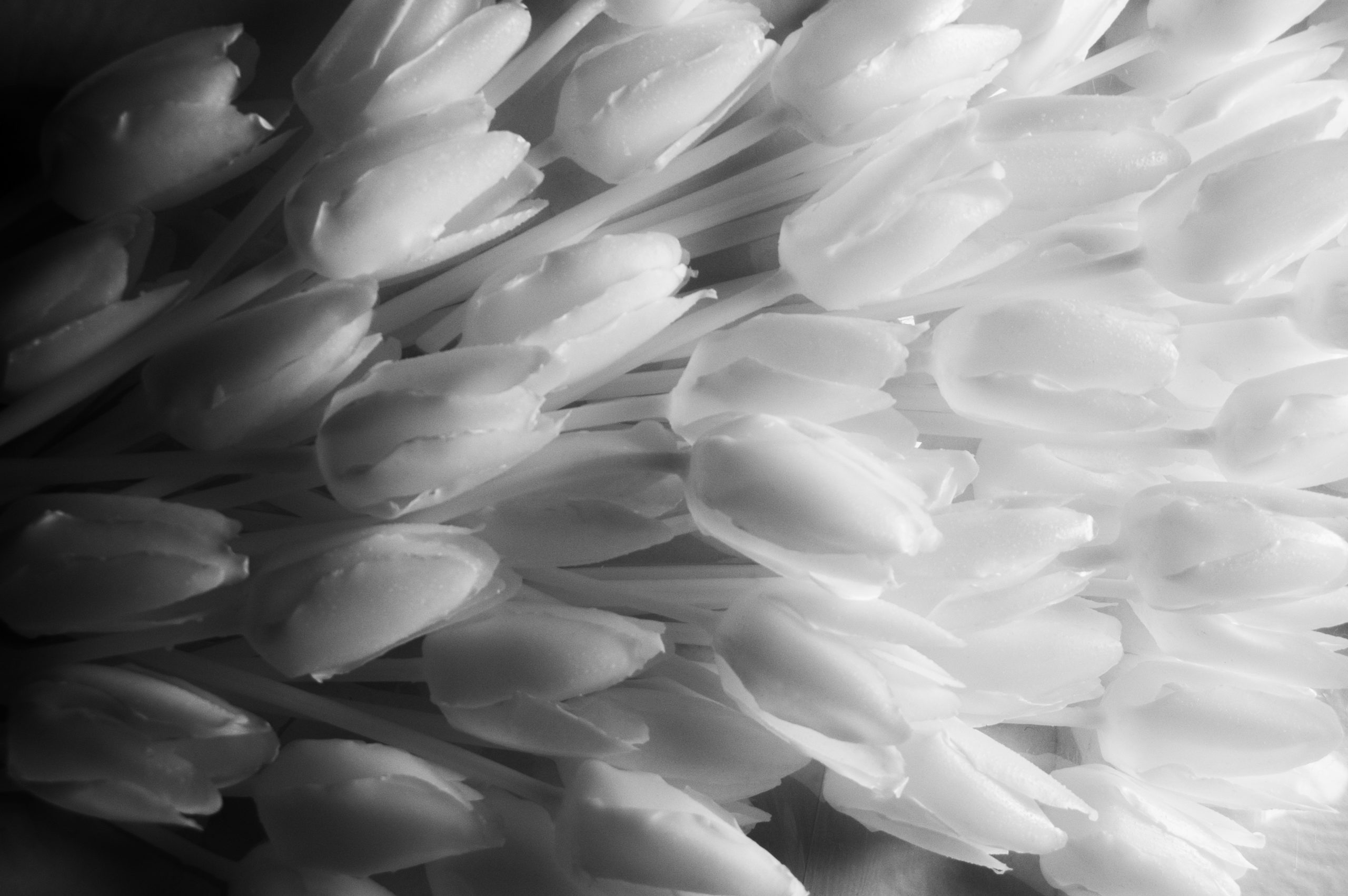
Mona Oren, Wax Tulip Mania
The second of our series dedicated to reappraisals of picturesque—how nature becomes art—reviews an exhibition at the Avant Galerie Vossen entitled From the Tulip to the Crypto Marguerite. The show suggests that art is a constantly fluctuating value, linking today’s bitcoin speculation to the tulip mania that consumed seventeenth-century Europe. While the tulip is the subject of many of the works in the show, including several painted works, Mona Oren’s Wax Tulip Mania project particularly addresses how natural materials morph into digital formats.
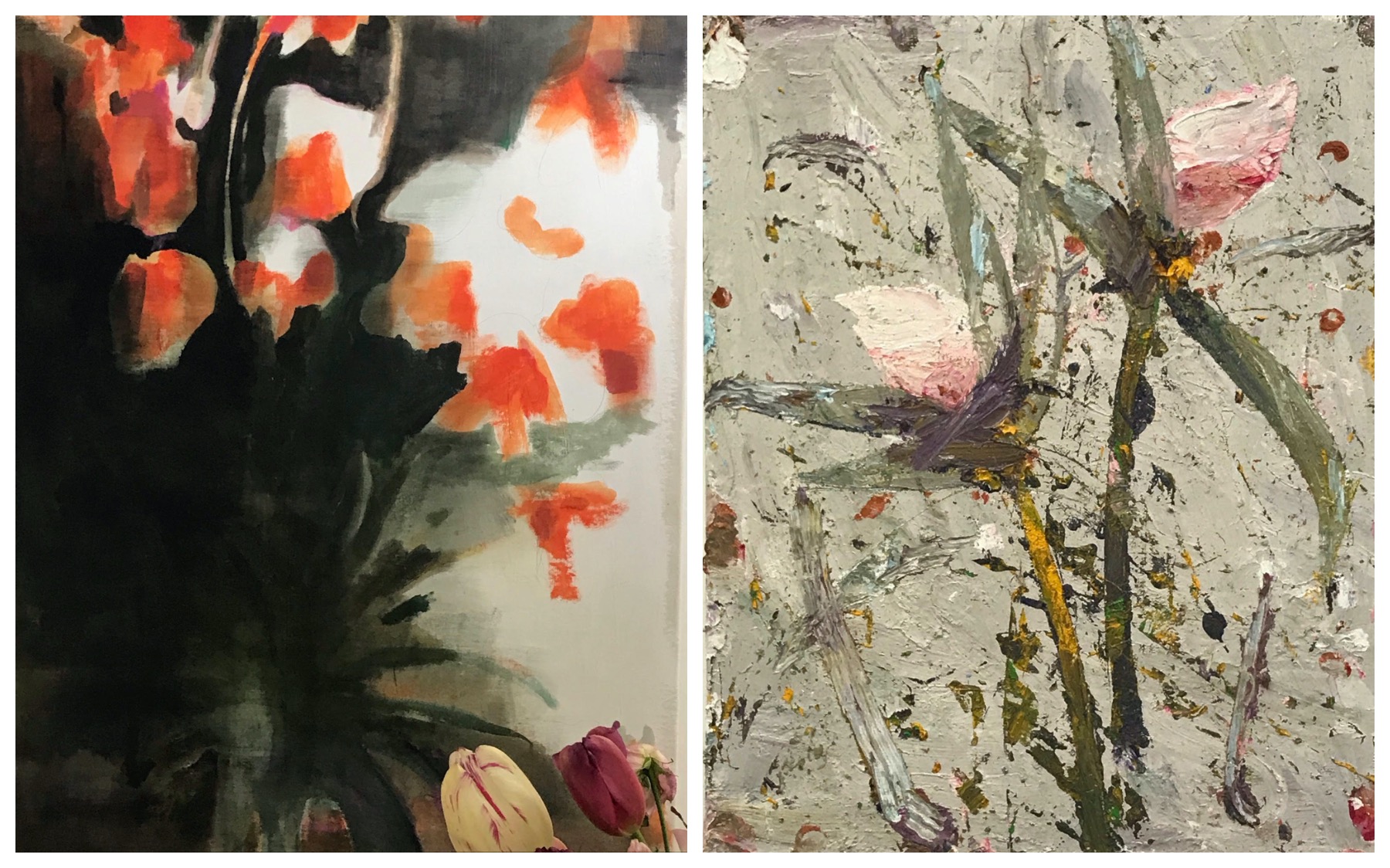
Milène Sanchez, Sans titre, 2019. Acrylique sur toile, 140 x 80 cm (left), Denis Laget, Sans titre, 2020. Huile sur toile (right)
For almost twenty years, Mona Oren has been creating wax sculptures and objects. Oren considers wax a living, organic material where the enticement to touch encourages intimacy between viewer and object. One may perceive wax, inherently malleable, as vulnerable and fragile, sensitive to ageing or heat, but under Oren’s hands, wax becomes a testament to resilience in her black, gray, and white tulips.
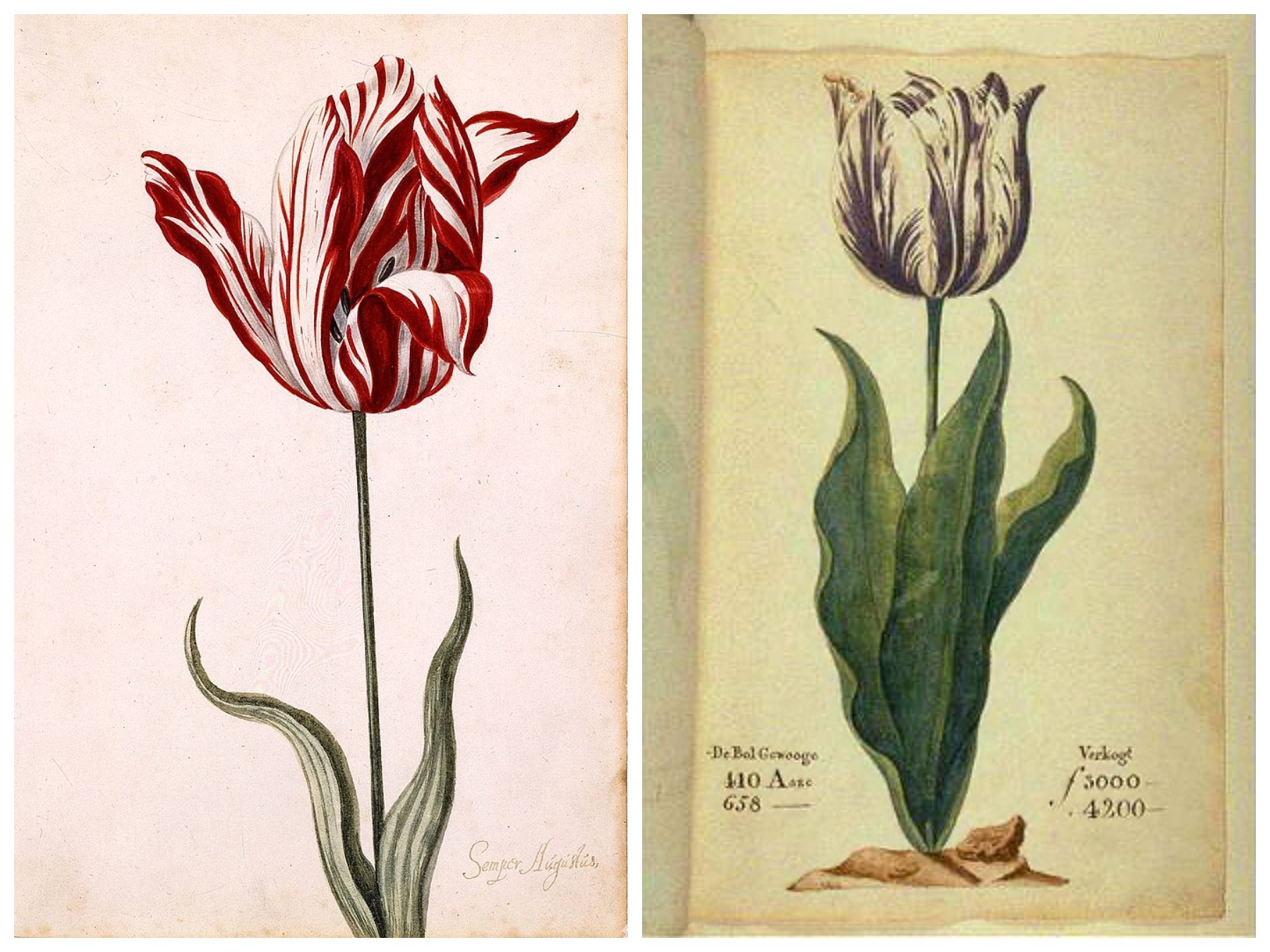
An anonymous 17th century water color of the Semper Augustus tulip (left). This tulip one of the most expensive because of its striations which were caused by the mosaic tulip virus. Admirael van der Eijck tulip listed from the 1637 catalog of P.Cos., sold for 1045 guilders on February 5, 1637 . We can see the prices on the catalogue. (right)
During the spring of 2020 when pandemic placed us in “in hibernation,” Oren dreamed of seeing the world bloom. The tulip was perhaps the perfect choice for Oren’s meditation, because like wax, the tulip’s very fragility triggered its fame. In the 1590s, a Dutch merchant received a number of bulbs which he thought were onions: after consuming a few, he planted several in his garden. Surprised when they grew to delicate flowers, with deeply saturated colors, he consulted his friend, the botanist Carolus Clusius, about them. Clusius, who established a botanic garden, experimented with tulips and shared his bulbs with scholars and patrons at European courts. Appreciated for their graceful forms and variety of colors, they became a symbol of the Dutch luxury trade. Growers invested in different varieties—single colored or stripped—betting on the outcome, creating what we recognize today as a futures market.
As the flowers grew in popularity, professional growers paid higher and higher prices for bulbs until bets on the flowers fetched hundreds of guilders in a speculation bubble. Tulip mania reached its peak during the winter of 1636–37, when betting on future bulbs on paper contracts were reportedly changing hands ten times in a day. No deliveries were ever made to fulfil any of these bets, because in February 1637 with the onset of bubonic plague, tulip trading was abruptly halted.
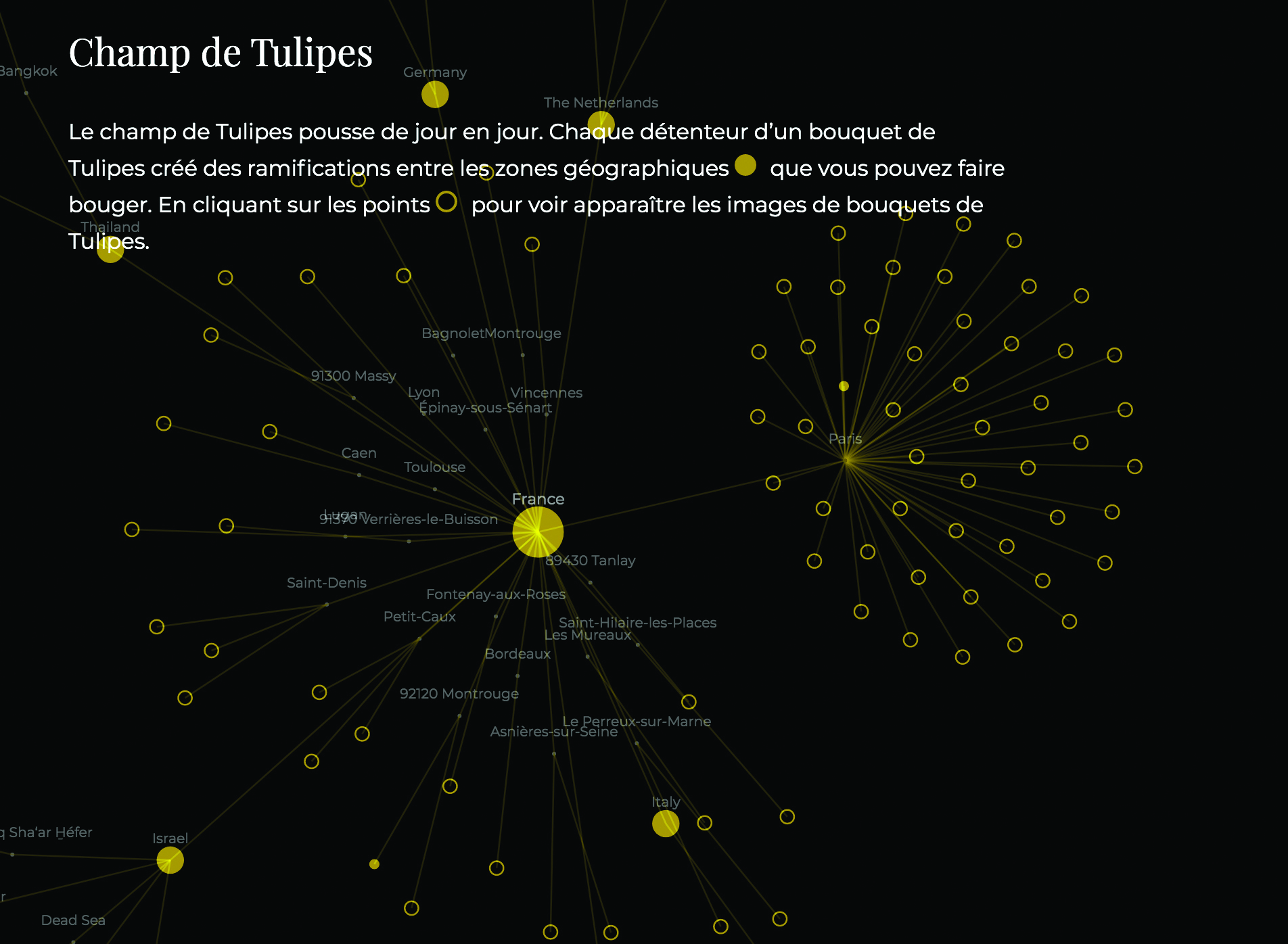 Oren’s tulips are not colored, but black, gray and white, marking their distance from artificial (silk) flowers. Oren, however, wanted to ‘plant’ her tulips around the world and created a digital mapping project to do so. Each client was asked to photograph their own bouquets and send her their tulips virtually ‘planted’ across the world. Oren created a digital map to connect her fields of tulips. A symbolic gesture of rebirth through a virtual artwork. When our experience of nature is increasingly curated for online consumption, Oren’s work is both natural and virtual and reminds us how the dynamics inherent to the picturesque (art as nature, nature as art) continue to inspire artists and designers.
Oren’s tulips are not colored, but black, gray and white, marking their distance from artificial (silk) flowers. Oren, however, wanted to ‘plant’ her tulips around the world and created a digital mapping project to do so. Each client was asked to photograph their own bouquets and send her their tulips virtually ‘planted’ across the world. Oren created a digital map to connect her fields of tulips. A symbolic gesture of rebirth through a virtual artwork. When our experience of nature is increasingly curated for online consumption, Oren’s work is both natural and virtual and reminds us how the dynamics inherent to the picturesque (art as nature, nature as art) continue to inspire artists and designers.
The interconnection of art and nature is a theme throughout many of our tours, including our Paris museum tours and our garden tours. Discover our offerings here.
For further reading: Mike Dash, Tulipomania: The Story of the Most Coveted Flower & the Extraordinary Passions it Aroused, New York, 1999.

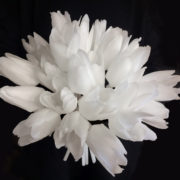

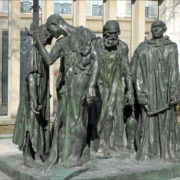
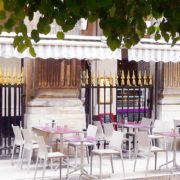
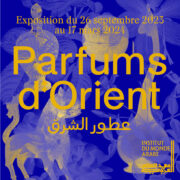
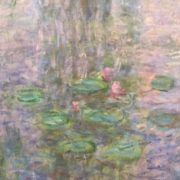
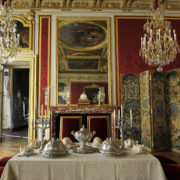


Leave a Reply
Want to join the discussion?Feel free to contribute!